Today is the second annual World Reef Day, which was founded by natural sunscreen company Raw Elements. The goal is to bring awareness to the dire situation of our coral reefs. Between June 1 and 5, you can witness 15 conversations and experiences on @RawElementsUSA’s Instagram page. For more information and the schedule of events, go to World Reef Day where donations are also accepted.
“It’s incredible to see something that started as an idea turning into a global movement. Our goal is to build the day each year and create a legacy for future generations.” — Raw Elements.
With fewer people in the ocean now in Hawaii, the reefs are getting a chance to recover. Anini on Kauai which has the longest and widest reef in the Hawaiian Islands, has seen new coral growth.
Reefs are the lifeblood of our oceans, with a quarter of all ocean fish dependent on them, and NOAA is suggesting that 500 million people depend on them for food and their income. Scientists are warning that coral reefs could be gone by the end of the century. Twenty-five percent of all the world’s reefs have perished in the past 30 years.
These gorgeous and diverse ecosystems are dying from everything from sunscreen pollution to ozone depletion and more. These communities of polyps are comprised of secreted limestone and are attached to rock or dead polyps.
Coral reefs found in coastal waters support shoreline protection, fishing, and coastal economies through tourism, fishing, shoreline protection, and more. Due to multiple causes, we are now seeing an alarming and global demise of coral reefs. Among the culprits are ozone depletion from man-made sources including sewage contamination, polluting chemicals including plastics and sunscreens, and natural sources including volcanic eruptions, climate change, and ocean acidification.
Most structures that we often identify as coral are comprised of thousands of tiny coral creatures called polyps, according to the NOAA. In hard coral, these polyps secrete rigid limestone skeletons and attach themselves to rock or nearby dead polyps and, with repetition, grow to become the expanse and vibrant coral reefs we have today.
Hawaii Coral Reefs
Research at Stanford University reveals that coral off Makapu’u on Oahu’s southwest coast, is much older than previously believed. Gold coral (Gerardia) that is found there may be more than 4,000 years old. Hawaii coral reefs have stood place in the central Pacific long enough to store a vast history of change in the ocean.
There are many threats to Hawaii coral reefs. Currently, Big Island coral is recovering following statewide coral bleaching that occurred in 2015 as a result of warm water temperatures. During that event, the majority of coral off the west side of the Big Island was damaged. This according to the Nature Conservancy.
“Bleaching events like what occurred in 2015 can overstress a coral reef to the point where it may never recover…We surveyed over 14,000 coral colonies at 20 sites along the West Hawaii coast from Kawaihae to Keauhou and were thrilled to see that many of the area’s reefs have stabilized, which is the first step toward recovery.” – Eric Conklin, Nature Conservancy’s Hawaii Marine Science Director.
Coral bleaching over some time weakens the reef and may result in its death. Reefs support about one-quarter of all marine life, and are associated with 1 million total species of plants and animals. Their value is as global as is the danger to them.
Stanford’s earlier research also indicated that the growth of old coral is so slow that any harvesting is unsustainable. Coral is at risk too from deep-sea trawling and long-line fishing.
New Hawaii sunscreen law starting in January 2021.
Hawaii has moved to ban sunscreens that can damage coral reefs. A recently enacted state law will prevent the sale of sunscreens containing oxybenzone and octinoxate. These chemicals are found in thousands of sunscreens.
Threats to Hawaii coral reefs and things you can do:
1. Use only physical barrier type sunscreens. Besides, they’re better for you too.
2. Don’t buy coral found in jewelry or souvenirs. Even Tiffany agrees that old (red) coral is simply too precious to harvest or wear.
3. Eat only sustainable seafood. That will ensure that fish stocks are maintained and over-fishing is eliminated.
4. Do not touch, disturb, or remove marine life from its habitat or shells.
5. Do not step, touch or stir up sediment on or near coral.
6. Educate yourself and others. Read about NOAA’s Coral Reef Conservation Program, and check out the Coral Reef Alliance.
Updated 6/1/20.
Get Breaking Hawaii Travel News
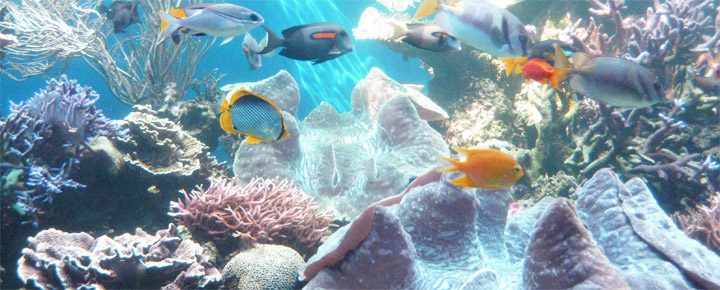


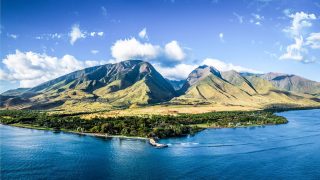
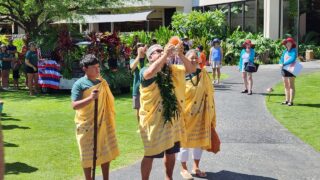
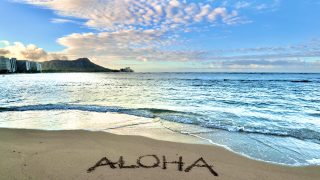
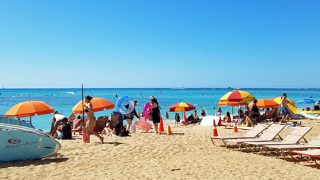
I lived on Maui back in 1976, and as a junior high student I spent a lot of time in the ocean. The coral was amazing along with all the sea life too. There was a vibrancy to the coral. I took my wife and two daughters back to Maui this last summer for two and a half weeks and not only was I disheartened to see the majority of the cane fields gone, but the coral in most areas we went snorkeling looked like it was covered with dirt. Not what I was expecting at all. We only used reef safe sun screen at all times which was something we didn’t have available back then to my knowledge. My hope and prayer is those that visit any of the islands would respect the oceans, land, and the people. Great article! Thanks, Mark, Boise Idaho.
Hi Mark.
Thank you.
Aloha.
An unintended, but wonderful, side effect from our governor shutting down tourism. We won’t die from imported C0vid (those of us that don’t first die from starvation or other lock-down related issues), but the coral reefs are recovering.
“Staying Home Saves Reefs” should be the new motto.
Coral reefs are the cement of the sea.
Aloha – there is a seventh, and most important, thing one can do to help save the reefs, and that is NOT use sunscreen at all. Instead consider using rash guards, hats, board shorts, or wraps. The fewer chemicals we have in the water, the better for everyone – corals, fish, and humans!
Aloha…..and Mahalo “Beat of Hawaii” for doing your part in keeping the community informed about our beautiful ocean and its life within……….and I also want to say Thanks for letting me share this information, sharing IS caring!
Respectfully’
Deb
Aloha Rob,
Great to see Beat of Hawaii joining the voices to protect our Hawaii environment and share good recommendation with our Hawaii visitors – especially those who go diving and snorkeling – to keep the Hawaiian coral alive for many years to come.
Mahalo, Pua
Best Hawaii Vacation blog
Aloha, and mahalo for publishing this very valuable information! The first paragraph cites Stanford University and states that Makapu’u is on the southwest coast of O’ahu. ?? Isn’t it on the northeast coast? It was the last time I drove by last month!
Kahuku Point is on the Northeast side of O’ahu, and Makapu’u is on the Southwest corner, not too far from Waimanalo. Aloha.
Aloha – great to see such articles about the importance of our coral reefs, their age, and what we can do to protect them. Thank you. And please note that Makapu’u is on O’ahu’s Windward coast, which would be generally on the East coast, and to the south, “between” Waimanalo to its north, and Sandy Beach/Hanauma Bay to the south, generally.
Hi Stephanie.
Thanks.
Aloha.